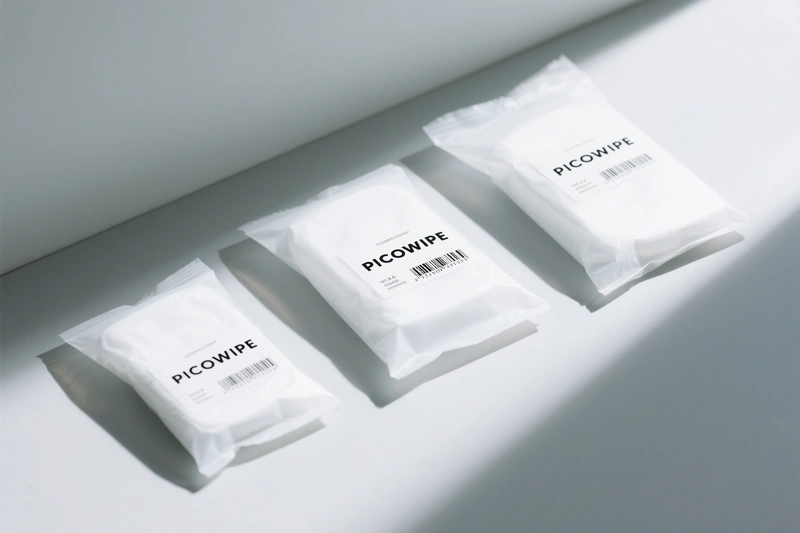By [email protected] — Charting the depths of expertise
SMT stencil wiping rolls, also known as SMT stencil cleaning rolls or SMT lint-free rolls, are a critical process control variable in Surface Mount Technology (SMT) for solder paste or red glue printing, not just a simple consumable. Their performance directly impacts production yield, operational costs, and final product reliability.
The Importance of Stencil Cleaning
Solder paste printing is the stage in the SMT process with the highest risk of introducing defects. During continuous printing, if solder paste and flux residues on the underside of the stencil are not effectively removed, it will directly lead to severe defects such as:
Smearing and Bridging: Residual solder paste is squeezed out, causing short circuits between adjacent pads, which is especially critical for fine-pitch components. Solder Balls: Tiny solder paste particles are transferred to non-soldering areas, forming solder balls after reflow that can cause short circuits. Fiber Contamination: Low-quality wiping rolls is torn by the sharp edges of the stencil apertures, and the resulting fibers (lint) get mixed into the solder paste. This can create voids within the solder joints, severely affecting mechanical strength and electrical reliability.
These defects can lead to high costs from rework and scrap, and even product recalls.
Common Materials & Processes for SMT Stencil Wipes
Key Materials
A blend of cellulose and polyester fibers (e.g., 55% cellulose / 45% polyester) is typically used to balance absorbency, strength, and cost.
Cellulose (Wood Pulp): Provides excellent liquid absorption but has low wet strength and is a primary source of fiber shedding. Polyester (PET): Provides high strength and abrasion resistance, serving as mechanical support. Polypropylene (PP): Offers outstanding chemical resistance, high strength, and is naturally low-linting.
Manufacturing Process
Unlike common nonwoven wipes, these rolls often have a distinct two-layer structure with a cellulose layer and a polyester layer (different materials on each side).
Air-laid: Wood pulp board is de-fibered into single fibers, which are then agglomerated onto a forming screen by air currents and consolidated into a fabric (the cellulose layer).
Spunlace: The current mainstream technology, which uses high-pressure micro-water jets to mechanically entangle fibers into a fabric without using any chemical binders. Its core advantage is that it completely eliminates the risk of binders dissolving in contact with solvents and re-contaminating the stencil, ensuring the structural strength and chemical purity of the wipe.
For more on manufacturing processes, see the article "What is Nonwoven Fabric? A Guide to Nonwoven Cleanroom Wipes".
Performance Indicators for SMT Stencil Wipes
Contamination Control (Low Linting): The goal is "zero shedding" or "extremely low shedding" to prevent micro-fibers from causing solder joint voids. ESD Safety (Antistatic): The wiping roll can generate static electricity during high-speed movement, which could damage sensitive components or ignite solvents. The product must have ESD-safe properties. Mechanical Strength (Tensile Strength): Especially its strength when wet (wet strength), it must be able to withstand abrasion from the stencil apertures without tearing to prevent machine jams. Cleaning Efficacy: Absorption & Entrapment: It must not only absorb the solvent but also effectively trap solder paste particles within its fiber structure. Solvent Efficiency: It should uniformly distribute the solvent through rapid capillary action, allowing a larger area to be cleaned with less solvent. Vacuum Airflow: For printers with vacuum-assist, the wiping roll must have good air permeability to allow the vacuum system to effectively remove loose particles and excess solvent.
Compatibility with Different Printer Models
Different printer models use wiping rolls with different specifications, mainly differing in width and the size of the inner core. Below are some common specifications:
| Automatic Printer | Roll Width/mm | Roll Length/m | Core Length/mm | Core ID/mm |
|---|---|---|---|---|
| JUKI | 260 | 15 | 270 | 38 |
| JUKI | 400 | 8 | 408 | 38 |
| JUKI | 450 | 10 | 470 | 19.6 |
| Panasonic SP18 | 350 | 10 | 380 | 38 |
| Hitachi | 300 | 10 | 360 | 30 |
| FUJI | 250 | 10 | 355 | 19.5 |
| FUJI | 500 | 15 | 500 | 26 |
| FUJI | 610 | 12 | 625 | 20 |
| MINAMI | 270 | 10 | 290 | 8 |
| MINAMI | 350 | 10 | 410 | 8 |
| MPM | 250/300/330/350/400 | 10 | 455 | 19.5 |
| EKRA | 300/400 | 10 | 400 | 14.5 |
| DEK | 250/300/400/490/500/510 | 10 | 530 | 20 |
| KME | 480 | 20 | 480 | 38 |
| GKG | 300/400 | 10 | 410 | 20 |
| Desen | 300 | 10 | 410 | 20 |
| YAMAHA | 350 | 10 | 360 | 25.5 |
| YAMAHA | 400 | 10 | 420 | 25.5 |
Introduction to Wiping Methods
The performance of an SMT stencil wiping roll is part of the entire understencil cleaning system.
Modern printers offer programmable cleaning sequences, typically combining three modes into a cleaning cycle:
Dry Wipe: Mechanically removes the bulk of the viscous solder paste. Wet Wipe: Applies a solvent to chemically dissolve residue. Vacuum Wipe: Uses negative pressure to physically suction away loosened particles and excess solvent.
An optimized sequence is often a wet wipe immediately followed by a vacuum wipe to achieve the most thorough cleaning result.


